A column by Len Johnson
Towards the end of the Melbourne’s Maurie Plant Classic meeting last weekend a longtime media colleague asked where I would rank the meeting against previous Melbourne classics.
“It’s up there,” I replied. A simple answer to a complex question. You can rank athletics meetings on many different criteria. Quality of performance is the obvious one but there’s no point using that as the sole criteria as you could answer it easily by compiling performance points from the world rankings. Where the meeting fits is another, but again this is an easy out. Any day at an Olympic Games is more important and reflects a deeper level of world competition than even the best and the brightest one-day event, and the Melbourne Cricket Ground has hosted both an Olympic Games in 1956 and a Commonwealth Games 50 years later. So, there’s your best days right there.
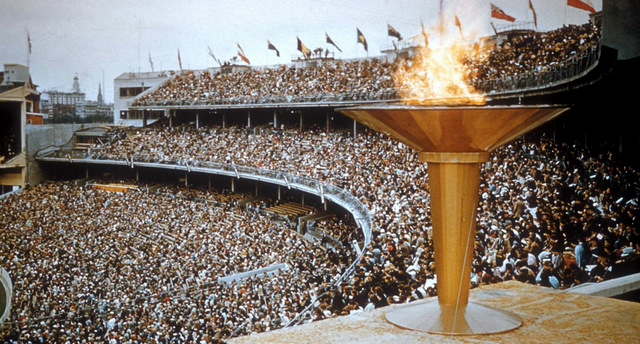
Then, not under consideration here, there’s the best days you’ve had that weren’t one-day meetings. Like running a lap of the Tan with Seb Coe, or being introduced to Steve Ovett in the Olympic Park changerooms, or taking Eammon Coghlan and Dave Moorcroft on our Monday night 10-miler around the Tan and the nearby gardens. Or trying to interview Sonia O’Sullivan during her warm-down after a track session. The hardest question being whether I could keep up and talk at the same time.
Then there’s one-day meetings which were significant enough at the time but became ever more significant in retrospect. Herb Elliott ran his first sub-four-minute mile with his 3:59.9 in January 1958 just a couple of weeks short of his twentieth birthday. By year’s end young Herb was the Empire Games champion at 880 yards and the mile, as well as world record holder in the 1500 (3:36.0) and mile (3:54.5). Or Cathy Freeman’s first sub-50 400 metres in February 1996, presaging a year in which she ran here still-current national record 48.63 to take the silver medal behind Marie-Jose Perec at the Atlanta Olympics.
All that notwithstanding, Melbourne25 was comparable with any other one-day meeting the city has staged. The weather was OK: threatened rain (mostly) held off, the stands were packed, the atmosphere was electric building up to the final event, the men’s 200 metres, in which Melbourne got its second glimpse of Gout Gout (he ran the 2024 meeting almost unnoticed), but first since he had broken Peter Norman’s venerable national record for 200 metres in the Queensland All Schools championships.
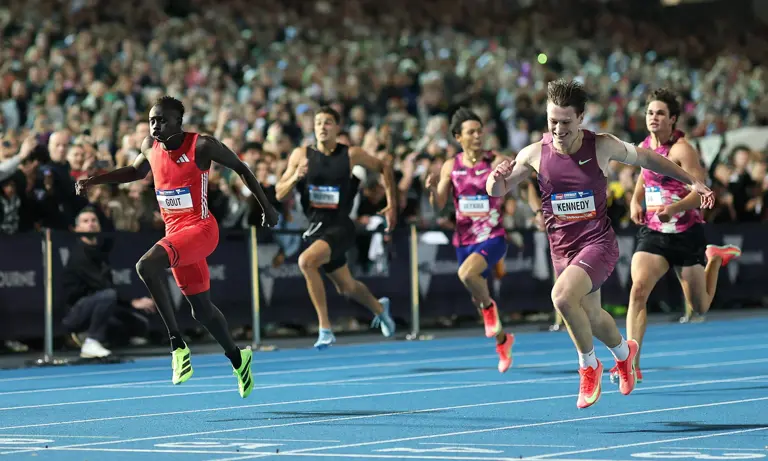
Relative newcomer Lianna Davidson and Olympic bronze medallist Matt Denny got things going in the night’s first two events. Davidson, a Queenslander at the University of Georgia, upstaged world championships bronze medallist Mackenzie Little in the javelin; Denny produced a series of massive throws in the discus.
The old face-new face back-and-forth continued threw the night with victories to Peyton Craig in the 800, Cameron Myers in the John Landy 1500 and Claudia Hollingsworth in the 1500 balanced by Eleanor Patterson’s high jump win. And there was old and new at the forefront of the 5000 where Ky Robinson came back from his world indoor 3000 bronze medal to narrowly defeat emerging star Seth O’Donnell.
And then the climactic 200 metres. World indoor 60 silver medallist knew he had to get a good start to have a chance against Gout who, good start or no, would be flying at him in the closing stages. He flew out of the blocks and clearly had taken metres out of Gout on the bend. Gout, who had looked a little tight to that stage, now relaxed and produced that surge we’ve already come to know well over the last 60 metres. He fell just 0.04 second short at the line, Kennedy running a personal best 20.26, outstanding in the cool and breezy conditions, Gout 20.30.

Long after the event had finished, and presentations been made, Gout and Kennedy were still signing autographs for hordes of young (and older) fans. You got the feeling we’ll be seeing a lot more of this on the way to Brisbane2032.
That was Melbourne25 then, a memorable night in front of a full house. If this was not the best ever, with what other events is it “up there.”
Melbourne’s 1996 event boasted more than Freeman. There were many other domestic and international stars besides as Nike got behind Australian athletics in the run-up to the Sydney 2000 Olympics. Freeman’s run was a national record at the time. Another national mark was set by Rohan Robinson in the 400 hurdles, his 48.87 putting him a couple of strides ahead of current Australian Athletics CEO Simon Hollingsworth’s 49.26.
That night’s young gun was Paul Cleary, who upstaged Kenyans David Kibet and the great Moses Kiptanui to win the 1500 metres. So miffed was Kiptanui that he turned his pacing duties in the 5000 metres just over an hour later into a racing role, taking out the win in 13:20. Even then he couldn’t get top billing, that went to Steve Moneghetti who produced a rare burst of finishing speed to overtake another Kenyan, Paul Bitok, for second place.
Another great day – great Sunday morning, actually – was the IAAF Grand Prix final in 2001. The early start was to avoid a direct clash with an AFL final being staged in the same precinct as the athletics later in the day. Unsurprisingly the early spring weather was uncomfortably cool, cold even for the athletes who had come down from the Goodwill Games in Brisbane the weekend before.
Hicham El Guerrouj may have spent much of the time rugged up and wearing a bean on his noggin, but he was hot enough when the 1500 started. His winning time of 3:31.25 remains the Australian allcomers record. In the 3000 metres Paul Bitok beat a young Ethiopian name of Kenenisa Bekele and two Sydney Olympic throws champions repeated their victories a little further south. Jan Zelezny threw 88.98 in the men’s javelin and Kamila Skolimowska produced a best of 71.71 to win the hammer from Australia’s Bronwyn Eagles.
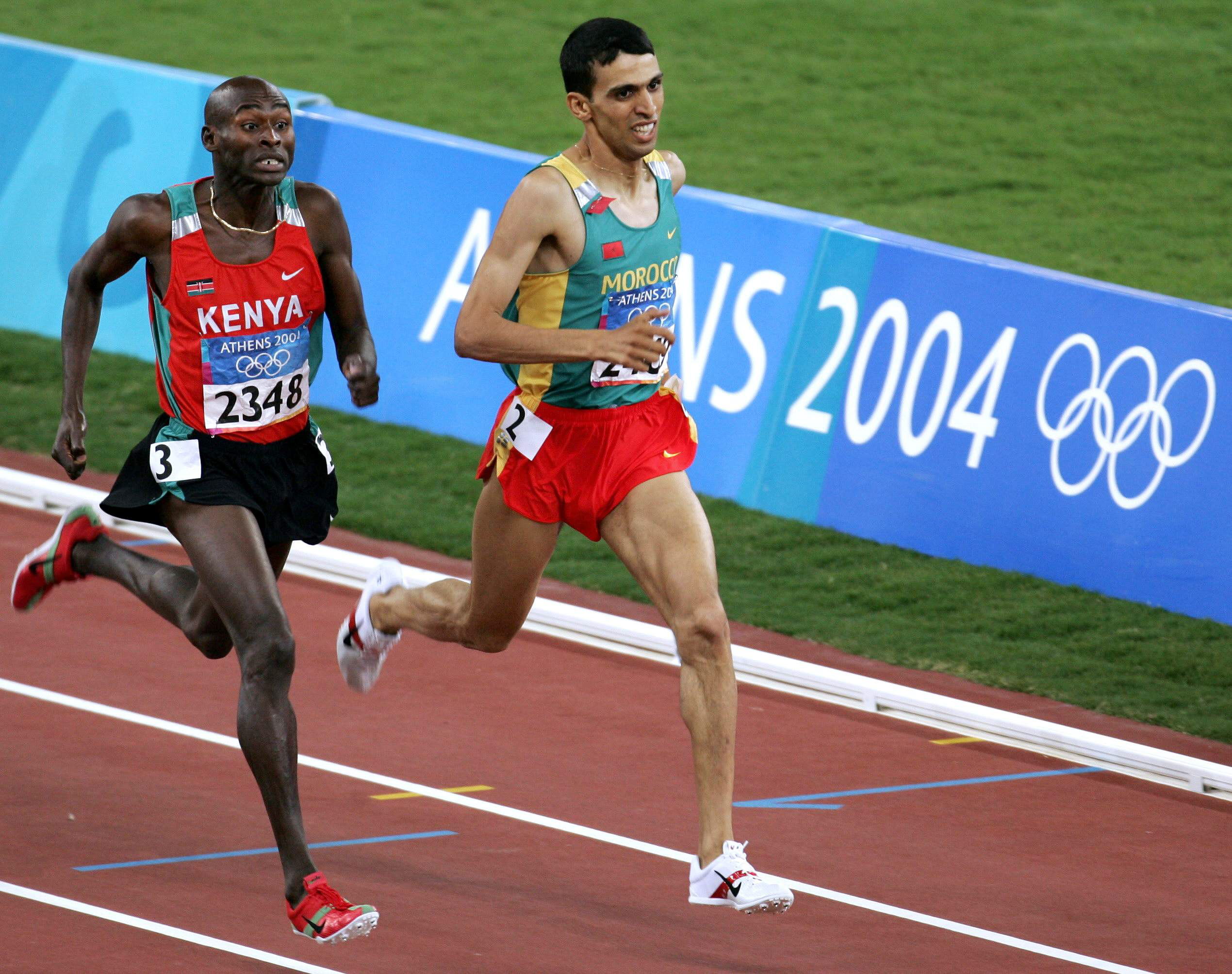
Finally, the events I would have liked to have seen, the series of twilight meetings in 1954 in which John Landy made repeated efforts to break four minutes for the mile. I was a little young to attend in person but I still remember the front-page pictures of Melbourne trams stranded in the sea of spectators trying to get into Olympic Park. Landy and some of his fellow athletes even had to climb the fence to gain entry to the ground. Can’t see any modern-day athletes having to do that. Up there, but fortunately they got down safely!


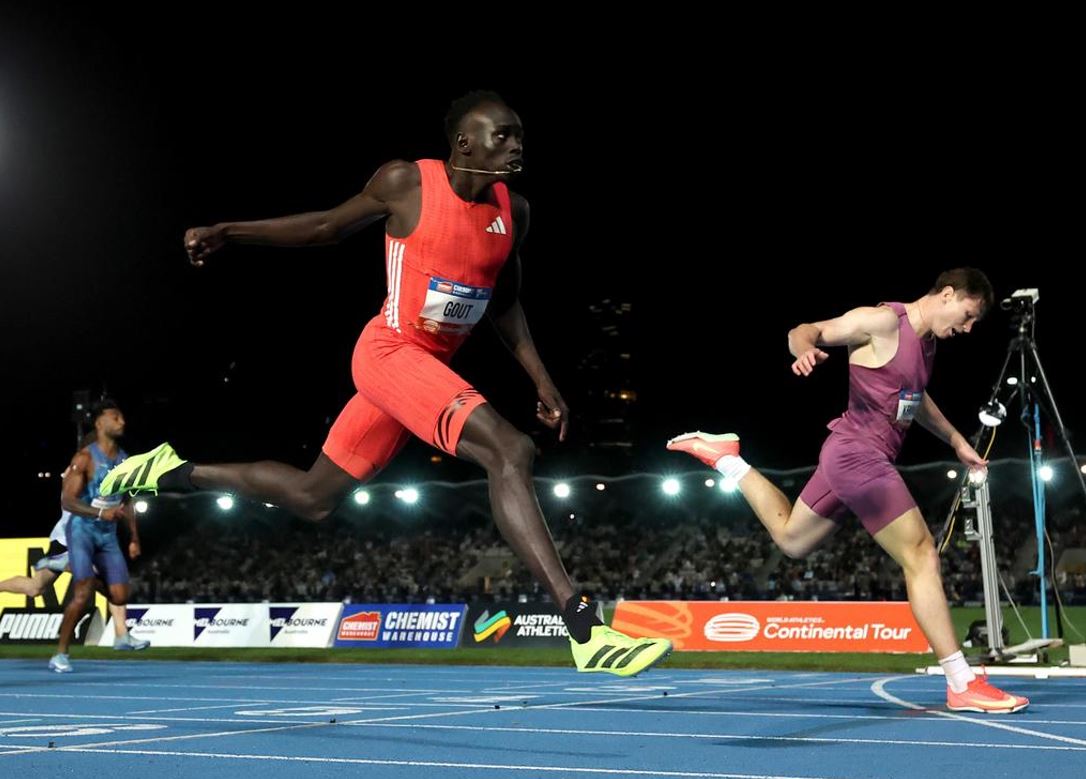
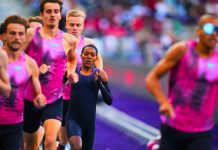
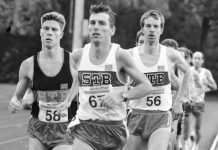
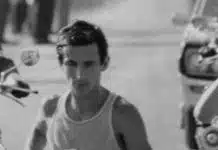
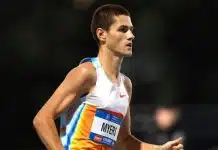
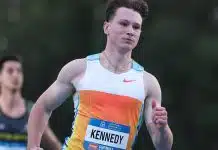
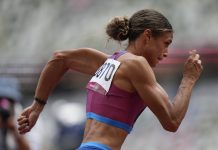

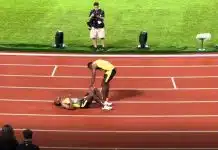
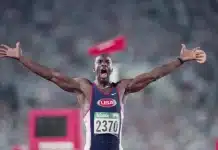
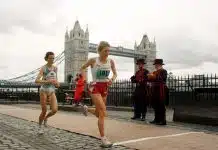
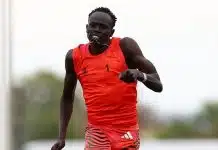


Could be chastised for not being at ground however a television coverage for a local athletics event was superb viewing and with Bruce Mc’s enthusiasm was excellent viewing !!!!
At last, and thanks Len for the report !!!